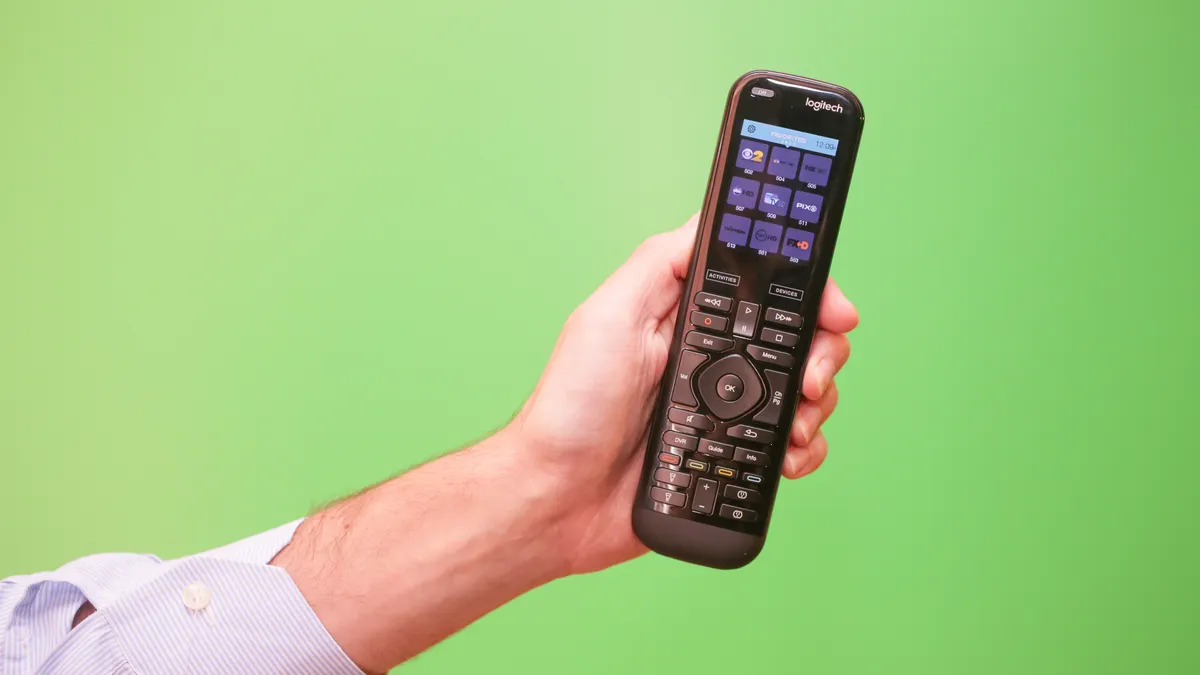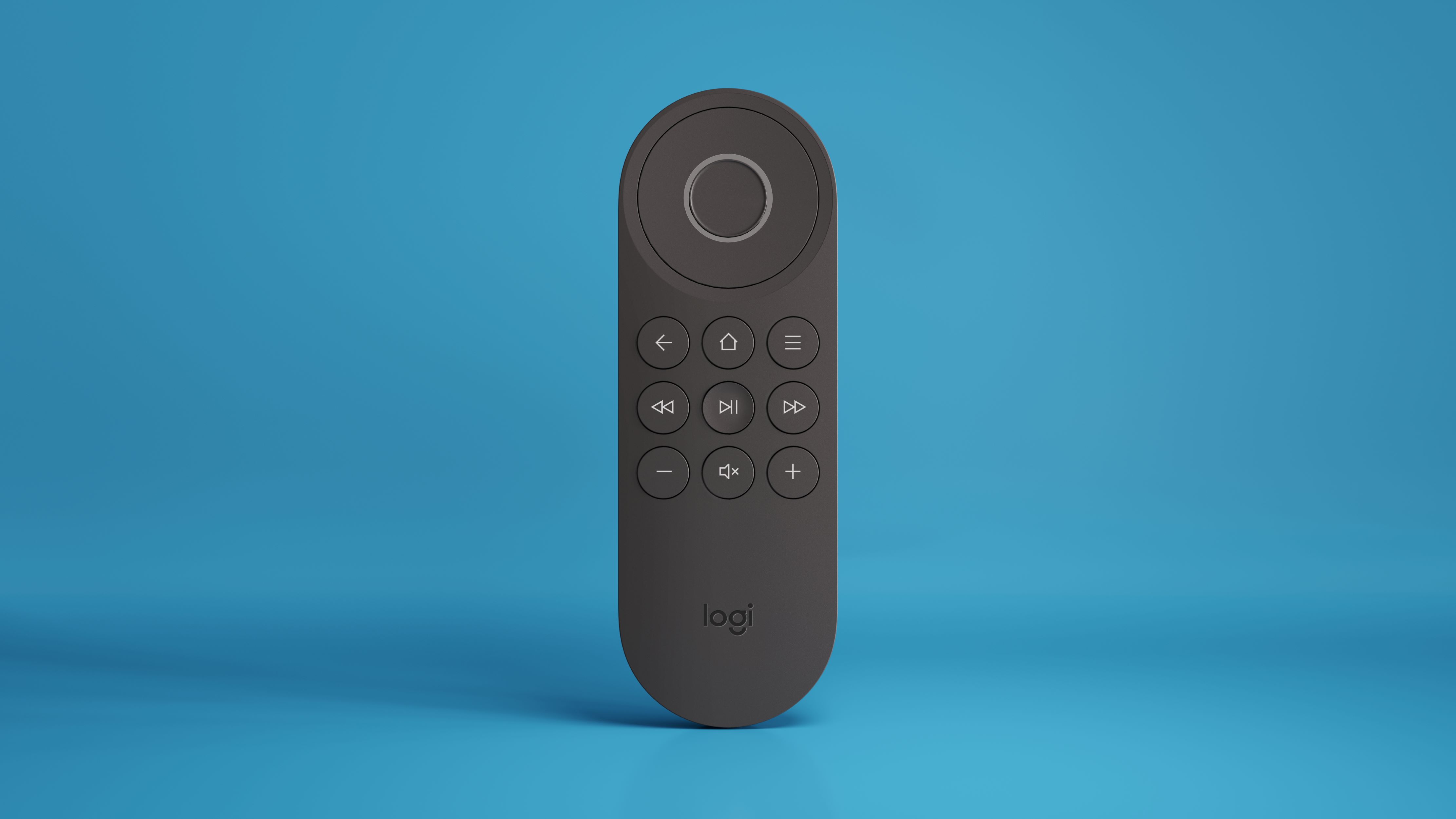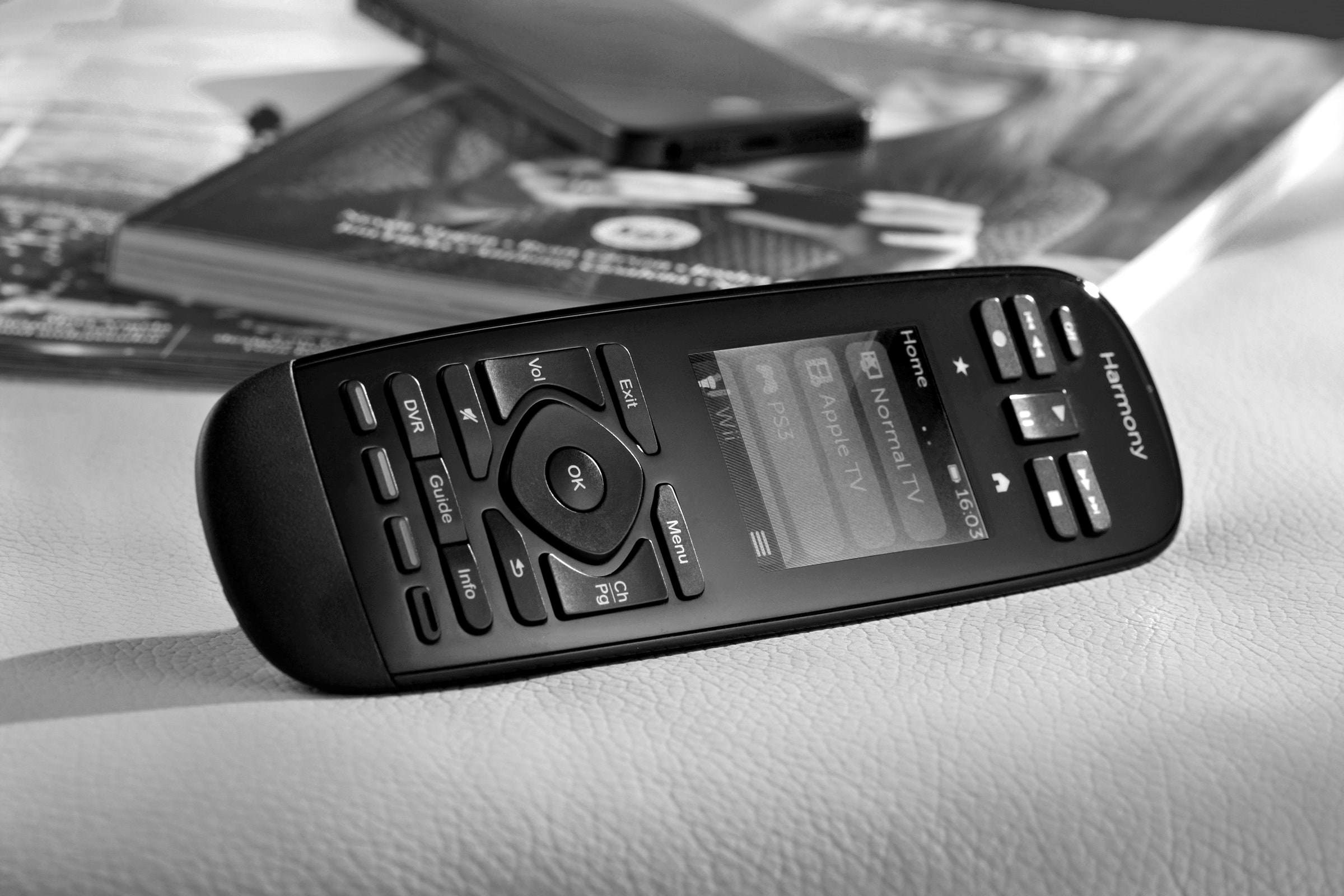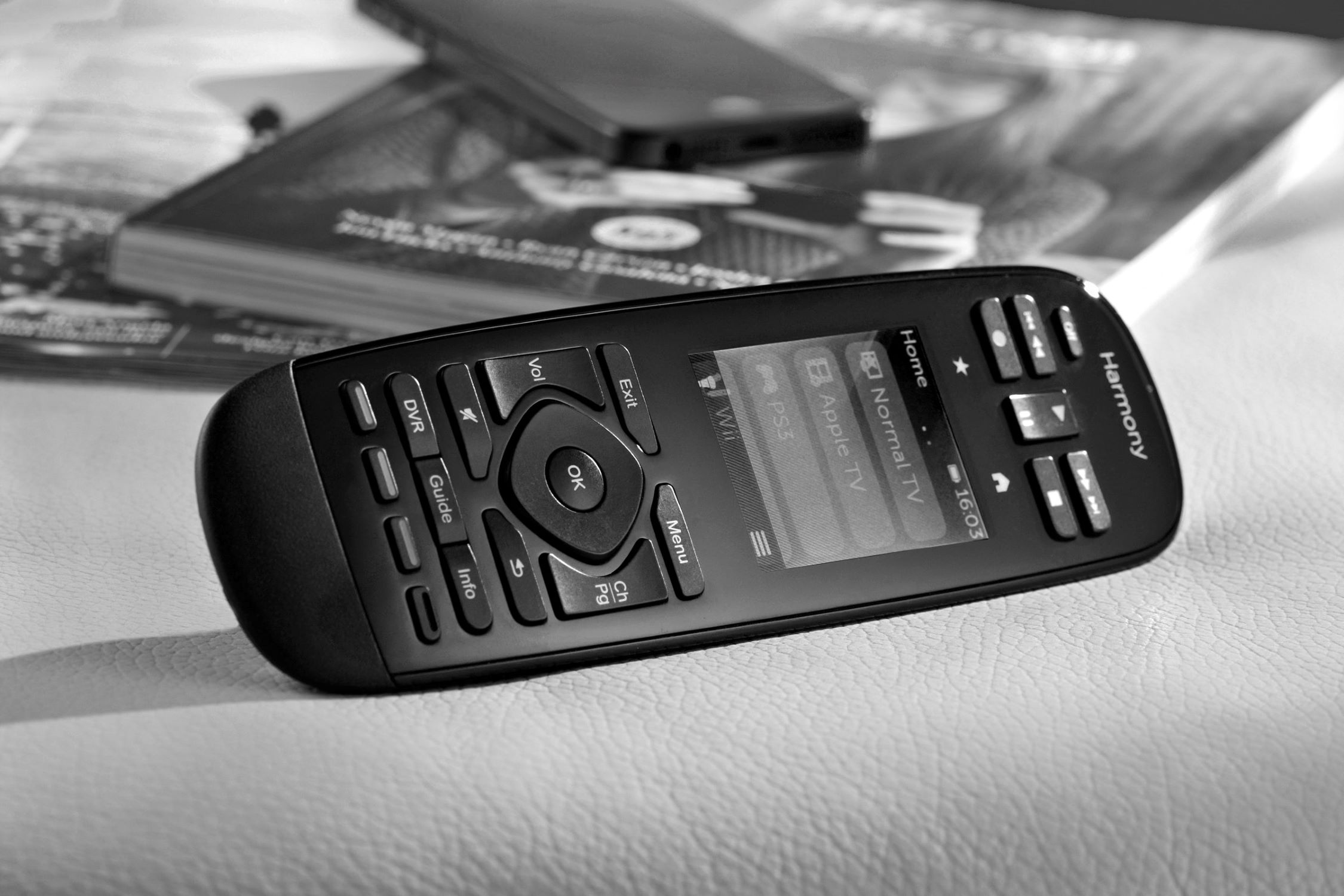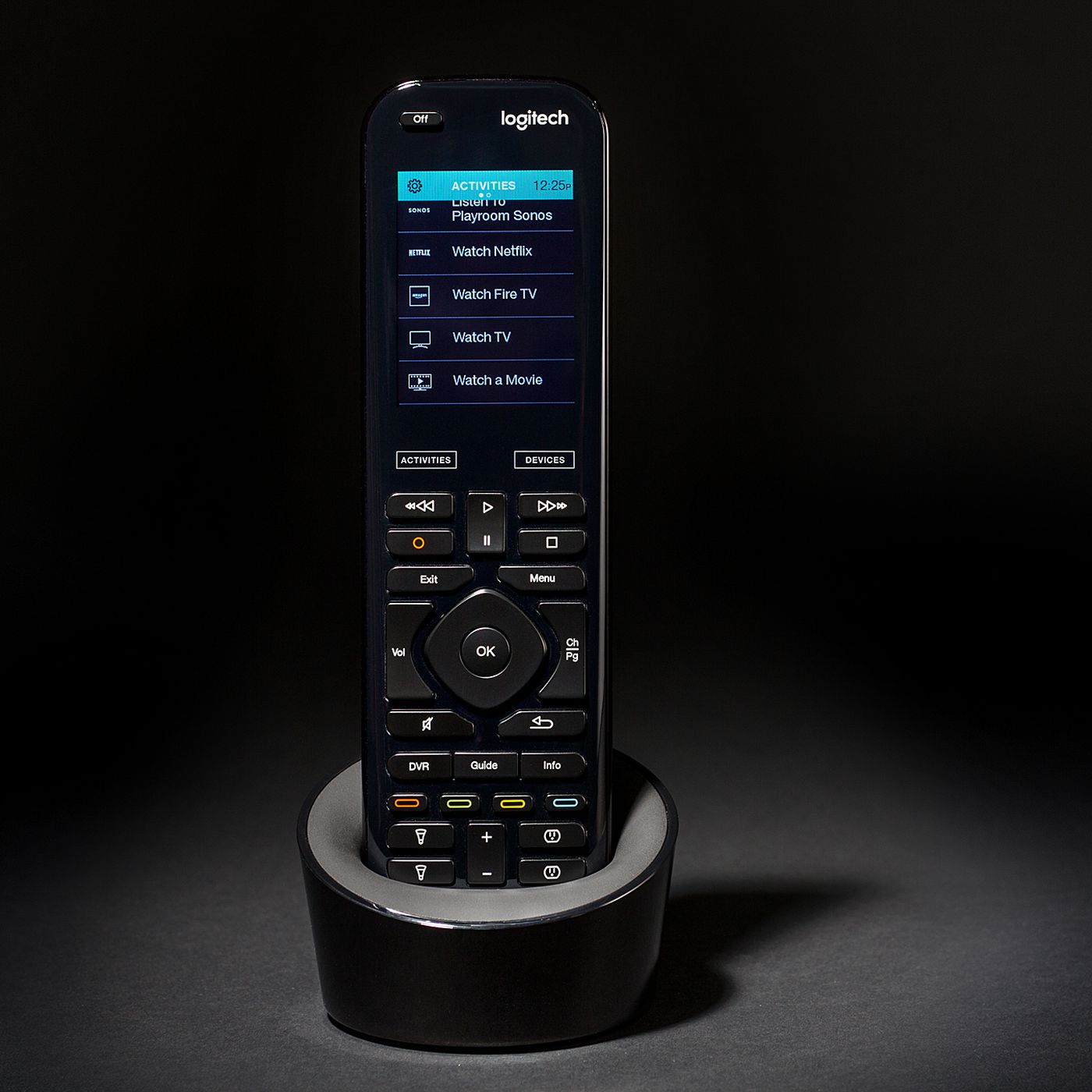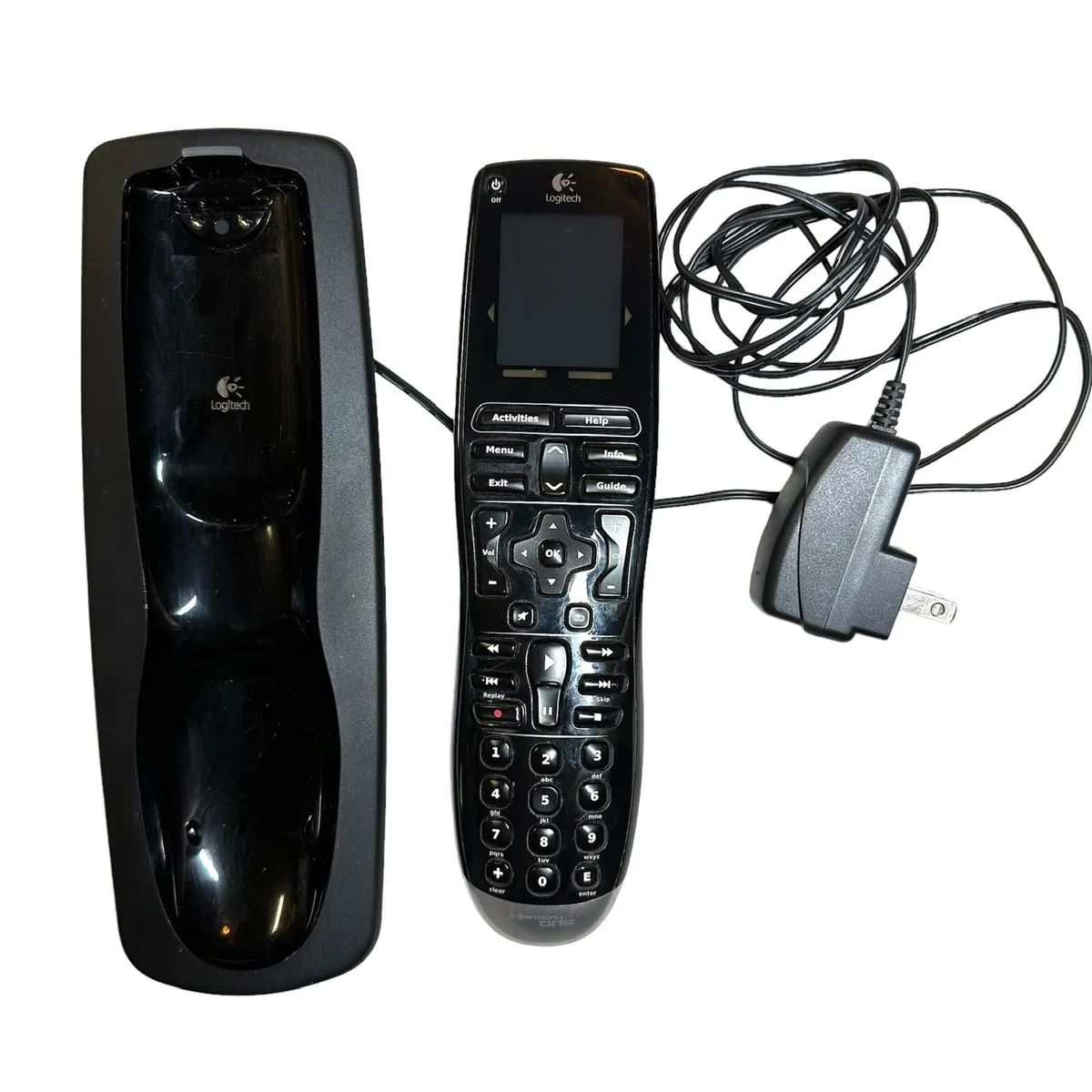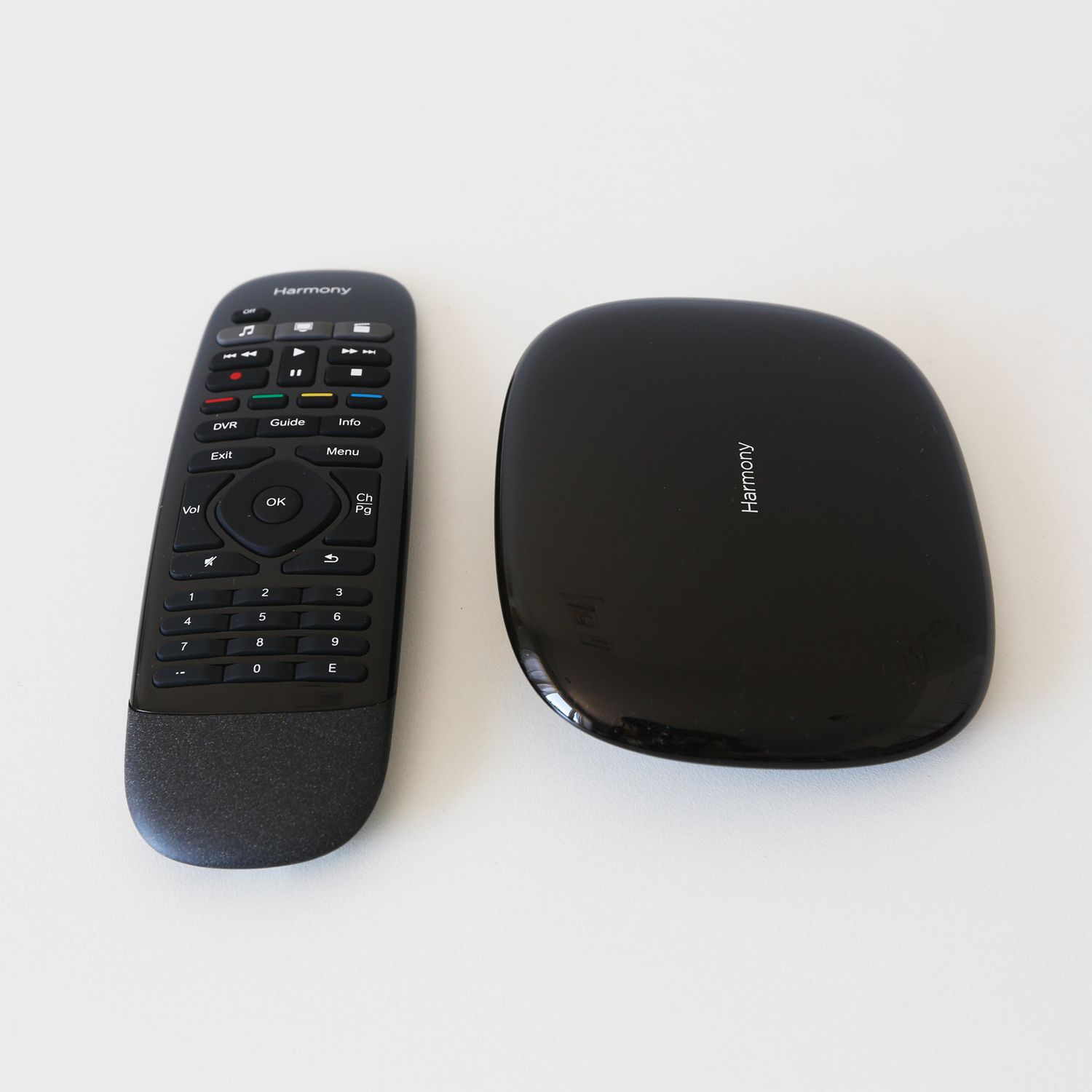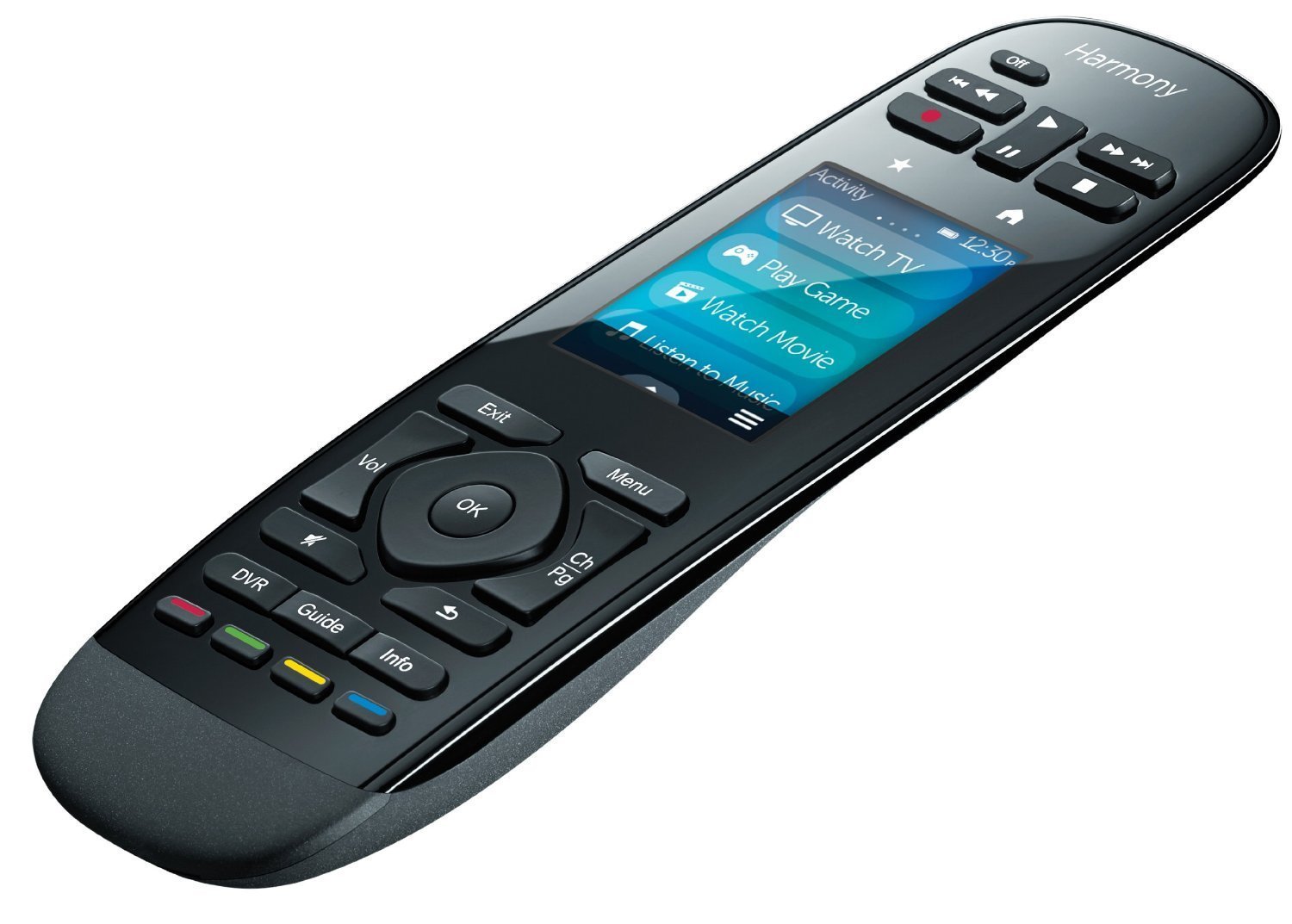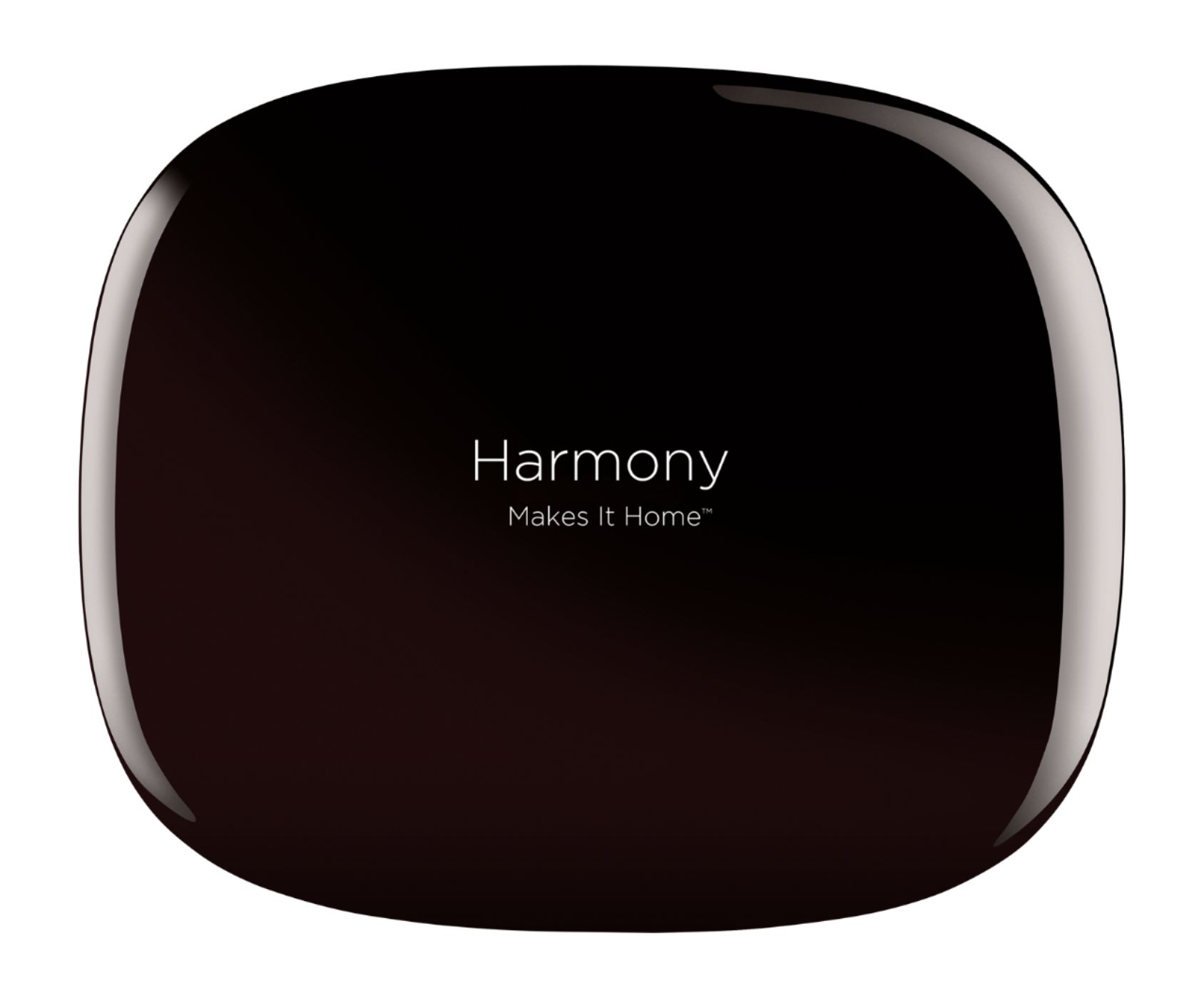Introduction
Welcome to our comprehensive guide on why Logitech has decided to discontinue its popular Harmony Remote, leaving many consumers surprised and seeking answers. The Logitech Harmony Remote has been a favorite among technology enthusiasts for its ability to control multiple devices with ease. However, Logitech’s decision to discontinue the product has left many wondering why they would discontinue a product with such a loyal following.
Over the years, the Logitech Harmony Remote has become synonymous with convenience and simplification. With just one universal remote, users could control their TVs, DVD players, gaming consoles, and various other devices seamlessly. However, in recent times, Logitech has chosen to shift its focus and reallocate resources to other areas of their business.
In this article, we will delve into the factors that led to Logitech’s decision to discontinue the Harmony Remote. We will explore the changing consumer behavior, technological advancements, and the competitive landscape that impacted the popularity of universal remotes. Additionally, we will discuss Logitech’s strategic shift and its implications on the Harmony Remote users.
By understanding the reasons behind Logitech’s decision, we hope to shed light on the future of universal remotes and provide some guidance to existing Harmony Remote users who are now searching for alternatives.
So, without further ado, let’s dig deeper into the rise and fall of the Logitech Harmony Remote and uncover the factors that influenced Logitech’s decision to discontinue this beloved device.
Logitech Harmony Remote: A Brief Overview
The Logitech Harmony Remote, introduced in 2001, revolutionized the way we interacted with our home entertainment devices. It quickly became a go-to choice for tech-savvy individuals who were tired of juggling multiple remotes for different devices. With its user-friendly interface and advanced features, the Harmony Remote offered convenience like never before.
The Harmony Remote boasted an extensive device database, allowing users to seamlessly control a wide range of electronics, including TVs, DVD players, gaming consoles, and even smart home devices. Its intuitive design and sleek form factor made it a popular choice among consumers, simplifying their home entertainment setups and enhancing their overall viewing experience.
One of the standout features of the Harmony Remote was its ability to create custom activities. Users could personalize their remote’s functionality by setting up activities like “Watch a Movie” or “Play Video Games.” With a single button press, the Harmony Remote would turn on the appropriate devices, switch inputs, adjust settings, and bring the user directly to their desired activity, eliminating the hassle of manual configuration.
The Harmony Remote also introduced an innovative approach to controlling devices through its online setup software. Users could easily connect their remote to their computer, access an extensive library of device profiles, and even customize button layouts to their preference. This allowed for seamless integration with even the most complex home theater systems.
Over the years, Logitech continued to refine and improve the Harmony Remote, introducing new models with enhanced features and compatibility. These advancements further solidified its position as the go-to universal remote for tech enthusiasts and home theater aficionados.
While the Harmony Remote certainly had its fair share of loyal followers, Logitech’s decision to discontinue the product came as a shock to many. However, understanding the factors that led to this decision can provide valuable insights into the changing landscape of consumer preferences and Logitech’s strategic priorities.
The Rise and Fall of Harmony Remote
The Logitech Harmony Remote experienced a meteoric rise in popularity, becoming a household name in the world of universal remotes. Its success can be attributed to various factors that contributed to its widespread adoption and loyal user base.
One of the main reasons for the Harmony Remote’s success was its ability to simplify complex home entertainment setups. Gone were the days of fumbling with multiple remotes and struggling to remember which button controlled which device. The Harmony Remote offered an all-in-one solution, allowing users to control their entire home theater system with just one device.
The Harmony Remote’s extensive device compatibility was also a major selling point. With a vast database of devices, users could easily find their specific model and seamlessly integrate it into the remote’s setup. This versatility and compatibility made it a versatile choice for users with diverse entertainment systems.
Additionally, the Harmony Remote’s customizable activities feature set it apart from other universal remotes on the market. Users could create personalized activities like “Watch TV” or “Listen to Music,” which would automatically power on the necessary devices and adjust settings accordingly. This streamlined user experience further solidified the Harmony Remote’s position as a leader in the industry.
However, as technology continued to evolve, so did consumer behavior and preferences. The rise of smart TVs, streaming services, and voice-controlled assistants changed the way people interacted with their entertainment devices. Consumers began seeking more integrated and seamless experiences, reducing the need for a separate universal remote.
Furthermore, the growth of HDMI-CEC (Consumer Electronics Control) technology allowed devices to communicate with each other over HDMI connections. This enabled users to control multiple devices using a single remote provided with their TV or other devices. The convenience and simplicity of this built-in functionality diminished the appeal of purchasing a separate universal remote.
Another contributing factor to the decline of the Harmony Remote was the increasing availability of streaming devices and smart TVs with dedicated mobile apps. These apps allowed users to control their devices directly from their smartphones, eliminating the need for a physical remote altogether.
Overall, while the Logitech Harmony Remote enjoyed a significant period of success, changes in consumer behavior, advancements in technology, and the availability of alternative solutions gradually led to its fall from prominence. Logitech recognized these evolving trends and made the strategic decision to discontinue the Harmony Remote to focus on other areas of their business.
Reasons behind Logitech’s Decision to Discontinue Harmony Remote
Logitech’s decision to discontinue the Harmony Remote was driven by several key factors that influenced their strategic direction and future business plans. Understanding these reasons provides insight into the company’s decision-making process and sheds light on the challenges faced by universal remote manufacturers.
First and foremost, the changing consumer behavior played a significant role in Logitech’s decision. With the rise of streaming services and smart home devices, consumers were shifting towards integrated, app-based control solutions. Instead of relying on a separate universal remote, many users found it more convenient to control their devices directly from their smartphones or use voice-controlled virtual assistants. This shift in preference reduced the demand for standalone remotes like the Harmony Remote.
Technological advancements also contributed to Logitech’s decision. HDMI-CEC technology, which allows for seamless control of multiple devices through HDMI connections, became increasingly prevalent. Many modern TVs and devices now offer this functionality, eliminating the need for a standalone universal remote. Additionally, advancements in mobile app development and device connectivity made it easier for consumers to control their devices through their smartphones or tablets.
The competitive landscape also played a role in Logitech’s decision. While the Harmony Remote enjoyed a loyal user base, the market for universal remotes became increasingly saturated with competitors offering similar functionality. As a result, Logitech faced stiff competition in an already challenging market. The company needed to evaluate its position and determine if the Harmony Remote aligned with their long-term strategic goals.
Furthermore, Logitech recognized the need to focus its resources and efforts on its core business areas. Discontinuing the Harmony Remote allowed the company to reallocate its resources to other product lines and technologies where it saw greater growth potential. By streamlining its product portfolio, Logitech can channel its resources towards innovations and markets that align with their strategic direction.
Lastly, the decision to discontinue the Harmony Remote was likely driven by a combination of cost-effectiveness and market demand. As consumer preferences shifted and the market for universal remotes became more niche, Logitech needed to assess the financial viability of continuing to manufacture and support the Harmony Remote. By discontinuing the product, they can focus on more profitable ventures and explore new opportunities.
Overall, Logitech’s decision to discontinue the Harmony Remote was driven by changing consumer behavior, technological advancements, competition, strategic realignment, and financial considerations. By recognizing these factors, Logitech can adapt to market dynamics and focus on areas that offer greater growth potential for the company.
Evolving Consumer Behavior and Technological Advancements
The discontinuation of the Logitech Harmony Remote can be attributed, in part, to the rapidly evolving consumer behavior and technological advancements that have reshaped the way we interact with our home entertainment devices. These shifts have influenced the demand for universal remotes and the relevance of standalone control devices in today’s digital landscape.
One significant factor is the changing consumer behavior towards integrated and connected devices. With the proliferation of smart TVs, streaming services, and smart home devices, consumers now have a wide array of options to control their entertainment systems. This has led to a decline in the need for a separate universal remote as users can often control their devices either through dedicated mobile apps or through voice-controlled virtual assistants.
Technological advancements have played a crucial role in accommodating these changing consumer preferences. HDMI-CEC, for example, allows devices to communicate with one another over HDMI connections, enabling users to control multiple devices using a single remote that comes with their television or other compatible devices. This convenience has diminished the appeal of standalone universal remotes like the Harmony Remote.
Moreover, the rise of mobile app development has empowered users to control their devices directly through their smartphones or tablets. Many manufacturers offer dedicated apps that allow users to control their TVs, sound systems, and other entertainment devices seamlessly. These apps often offer additional features and functionality, such as personalized recommendations and content streaming, further reducing the need for a standalone universal remote.
Voice-controlled virtual assistants, such as Amazon Alexa and Google Assistant, have also gained popularity in recent years. These assistants can integrate with various devices in the home, allowing users to control their entertainment systems using voice commands. The widespread adoption of these virtual assistants has further decreased the necessity for a dedicated universal remote.
Additionally, the increasing availability of streaming devices, such as Apple TV, Roku, and Amazon Fire TV, has transformed the way we consume content. These devices often come with their own dedicated remotes or can be controlled through mobile apps. Users have embraced these streaming devices as a convenient and seamless way to access their favorite shows and movies, further diminishing the role of a universal remote in this context.
In summary, evolving consumer behavior and technological advancements have greatly impacted the demand for universal remotes like the Logitech Harmony Remote. Integrated and connected devices, HDMI-CEC technology, mobile apps, and voice-controlled virtual assistants have all contributed to the decline in the relevance of standalone universal remotes as consumers seek more integrated and streamlined control solutions for their home entertainment systems.
Competitive Landscape and Declining Relevance of Universal Remotes
The discontinuation of the Logitech Harmony Remote is not only a result of evolving consumer behavior and technological advancements but also a reflection of the competitive landscape and the declining relevance of universal remotes in today’s market.
One major factor contributing to the declining relevance of universal remotes is the increasing availability of built-in control solutions. Many modern TVs, sound systems, and other entertainment devices come equipped with their own dedicated remotes that offer comprehensive control options. These remotes often have advanced functionalities and intuitive interfaces, making them a more appealing choice for consumers seeking simplicity and convenience.
The rise of smart TVs and connected devices has also shifted the focus towards app-based control solutions. Users can now control their devices using dedicated mobile apps that offer a more seamless and integrated experience. These apps provide additional features, such as content recommendations and personalized settings, enhancing the overall user experience and further reducing the need for a separate universal remote.
Furthermore, the increasing competition in the market for universal remotes has played a role in the declining relevance of the Logitech Harmony Remote. Several manufacturers offer their own versions of universal remotes, often with similar features and capabilities. This saturation of the market has made it more challenging for any single brand to establish a dominant position.
Additionally, the entry of streaming devices, such as Apple TV, Roku, and Amazon Fire TV, has contributed to the declining relevance of universal remotes. These devices typically come with their own dedicated remotes or can be controlled through mobile apps. The focus on streaming services and the simplicity of dedicated control solutions have attracted consumers away from universal remotes.
Another aspect to consider is the growing integration of voice-controlled virtual assistants. Devices like Amazon Alexa and Google Assistant allow users to control their entertainment systems using voice commands. The convenience and ease of use provided by these assistants have further reduced the need for a physical universal remote.
It is evident that the competitive landscape and the declining relevance of universal remotes have influenced Logitech’s decision to discontinue the Harmony Remote. The availability of built-in control solutions, app-based control options, streaming devices, and voice-controlled assistants have all contributed to the diminishing demand for standalone universal remotes.
In the face of stiff competition and shifting consumer preferences, Logitech has chosen to refocus its efforts on areas that align more closely with the evolving market dynamics and technological advancements.
Strategic Shift and Focus on Core Business Areas
The decision to discontinue the Logitech Harmony Remote is part of a strategic shift by Logitech to streamline its product portfolio and refocus its resources on core business areas. By doing so, Logitech aims to adapt to changing market dynamics and prioritize investments in areas that offer greater growth potential.
Logitech is a diversified technology company with a range of product offerings beyond universal remotes. They have a strong presence in the computer peripherals market, manufacturing items such as keyboards, mice, webcams, and audio devices. The decision to discontinue the Harmony Remote aligns with Logitech’s strategic focus on its core business areas, where they have historically been successful.
By reallocating resources from the Harmony Remote to these core business areas, Logitech can concentrate on product development, innovation, and customer support to maintain its position as a market leader. This strategic realignment allows Logitech to maximize its expertise and capitalize on the opportunities presented in these key segments.
In addition, Logitech recognizes the importance of staying ahead of technological advancements and meeting the needs of today’s consumers. As consumer behavior shifts and new technologies emerge, Logitech aims to devote its resources to developing cutting-edge products that meet these changing demands.
The decision to discontinue the Harmony Remote also reflects Logitech’s commitment to financial prudence. By evaluating the product’s performance and considering market demand, Logitech can optimize its investments and ensure a focus on projects that generate sustainable returns. This financial discipline allows the company to allocate resources to areas that can generate higher growth and profitability.
Logitech’s strategic shift does not necessarily mean the end of their involvement in the home entertainment control market. It simply means that they will explore new approaches and technologies that align with their core competencies and offer better opportunities for growth and success. The decision to focus on core business areas enables Logitech to leverage its strengths, invest in research and development, and provide innovative solutions to meet the changing needs of consumers.
Overall, Logitech’s strategic shift and focus on core business areas demonstrate the company’s commitment to adapt to market dynamics and prioritize investments for long-term success. By streamlining its product portfolio and reallocating resources, Logitech can optimize its operations, maintain its market leadership, and continue providing innovative solutions in the ever-evolving technology landscape.
Customer Reaction and Impact of Discontinuation
The news of Logitech discontinuing the Harmony Remote has sparked a range of reactions from the loyal user base that has relied on the universal remote for their home entertainment control needs. Customers have expressed their disappointment and concern over the discontinuation and have raised questions about the future of their existing Harmony Remotes.
Many Harmony Remote users have praised the device for its convenience and ease of use. They appreciate the seamless integration with various devices and the ability to create personalized activities. Some users have expressed their loyalty to the brand and are disappointed to see Logitech move away from the universal remote market.
However, there is also an understanding among some users that consumer behavior and technology have evolved, making standalone universal remotes less relevant. Many customers have adapted to app-based control solutions, built-in control functionalities on their devices, and voice-controlled virtual assistants.
The impact of the Harmony Remote’s discontinuation varies for different individuals. Existing Harmony Remote users may have concerns about the long-term compatibility of their devices and the availability of ongoing support and updates. They may be unsure about the options available to replace their Harmony Remote and maintain the same level of convenience and control.
One potential impact is that users may need to rely on multiple remotes or alternative control methods to manage their home entertainment systems. This can be inconvenient and may not provide the same level of integration and simplicity that the Harmony Remote offered.
In terms of the market, the discontinuation of the Harmony Remote is a reflection of the changing industry landscape and the declining relevance of standalone universal remotes. Other manufacturers of universal remotes may also need to reassess their product offerings and adapt to consumer preferences to stay competitive in the market.
Logitech’s decision to discontinue the Harmony Remote does not mean that they will completely abandon their loyal user base. The company has assured customers that they will continue to provide support and warranty services for existing Harmony Remote users. However, it remains to be seen what specific plans and alternatives Logitech will offer to cater to the evolving needs of their customers.
Overall, the announcement of discontinuing the Harmony Remote has generated mixed reactions among customers. While some customers express disappointment at losing a familiar and reliable control solution, others understand the market dynamics and the need for Logitech to adapt its product portfolio. The impact of the discontinuation will depend on individual users’ reliance on the Harmony Remote and their willingness to explore alternative control methods or devices in the future.
What Lies Ahead for the Harmony Remote Users?
For Harmony Remote users who have relied on the device for seamless control of their home entertainment systems, the discontinuation may raise questions about the future and potential alternatives. While Logitech has chosen to shift its focus away from universal remotes, there are still options and considerations for existing Harmony Remote users.
First and foremost, Logitech has assured customers that they will continue to provide support and warranty services for existing Harmony Remote users. This means that if users encounter any technical issues or require assistance, Logitech will be there to offer help and guidance. This ongoing support provides some reassurance to existing Harmony Remote users, knowing that their investment is still backed by the manufacturer.
Additionally, although Logitech is discontinuing the Harmony Remote, the brand has not completely exited the home entertainment control market. It is possible that Logitech may introduce new products or explore different control solutions in the future. Existing Harmony Remote users can stay informed about any new developments from the company and consider potential alternative offerings if they align with their needs.
Third-party universal remotes are also available on the market. While Logitech was a dominant player in this space, other manufacturers offer similar products that aim to provide control over multiple devices. Users can research and evaluate these alternatives to find a universal remote that suits their requirements and offers comparable functionality to the Harmony Remote.
An alternative option for Harmony Remote users is to embrace the shift towards integrated control solutions. Many modern devices, including smart TVs and streaming devices, now offer built-in control functionalities that allow users to control multiple devices through a single remote or a mobile app. Consider exploring these built-in control solutions to streamline the management of your home entertainment systems.
Moreover, with the rapid advancement of smart home technology, users can explore the integration of voice-controlled virtual assistants, such as Amazon Alexa or Google Assistant. These assistants can provide a hands-free and intuitive way to control various devices, including TVs, sound systems, and streaming devices. By utilizing voice commands, users can experience seamless control and integration within their smart home ecosystem.
Ultimately, the discontinuation of the Harmony Remote does not need to be the end of a convenient and personalized control experience for users. Exploring support from Logitech, considering alternative universal remotes, embracing built-in control solutions, or integrating voice-controlled virtual assistants are potential options for Harmony Remote users to adapt and continue enjoying a streamlined home entertainment control experience.
Conclusion
The discontinuation of the Logitech Harmony Remote marks a significant shift in Logitech’s strategic focus and the changing landscape of home entertainment control. The rise of integrated control solutions, app-based control options, streaming devices, and voice-controlled virtual assistants has diminished the relevance of standalone universal remotes.
Logitech’s decision to discontinue the Harmony Remote reflects their commitment to adapt to evolving consumer behavior, prioritize strategic investments, and optimize their core business areas. While this announcement may disappoint loyal Harmony Remote users, Logitech has pledged ongoing support and warranty services to ensure customer satisfaction.
Existing Harmony Remote users have various options to consider moving forward. They can explore alternatives in the market, such as other universal remotes, built-in control solutions provided by devices, or integrate voice-controlled virtual assistants to enhance their home entertainment control experience.
Furthermore, the discontinuation of the Harmony Remote presents an opportunity for Logitech to explore new avenues, leverage technological advancements, and invest in areas that offer greater growth potential. By aligning their resources and focusing on core business areas, Logitech can continue to innovate and cater to the changing needs of consumers.
As the technology landscape continues to evolve, it is important for users and manufacturers alike to adapt and embrace new control solutions that simplify and enhance the home entertainment experience. The legacy of the Harmony Remote will remain, as it played a significant role in revolutionizing the way we interacted with our devices and brought convenience to countless households around the world.
In conclusion, while the discontinuation of the Logitech Harmony Remote marks the end of an era, it also signifies the beginning of new possibilities for users and Logitech alike. The future of home entertainment control lies in integrated, seamless, and personalized solutions that adapt to the ever-changing technological landscape.







